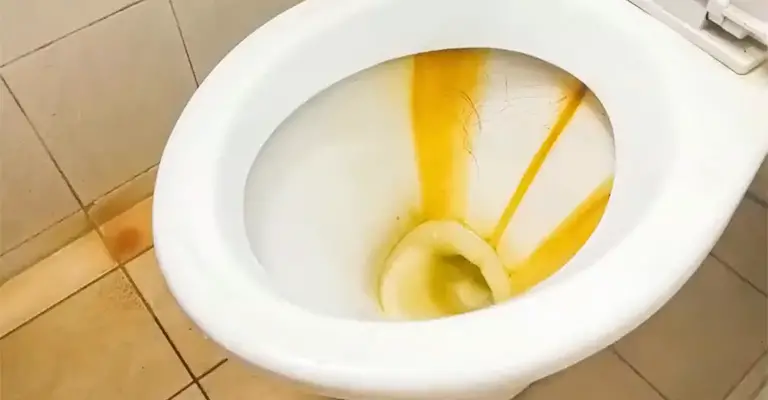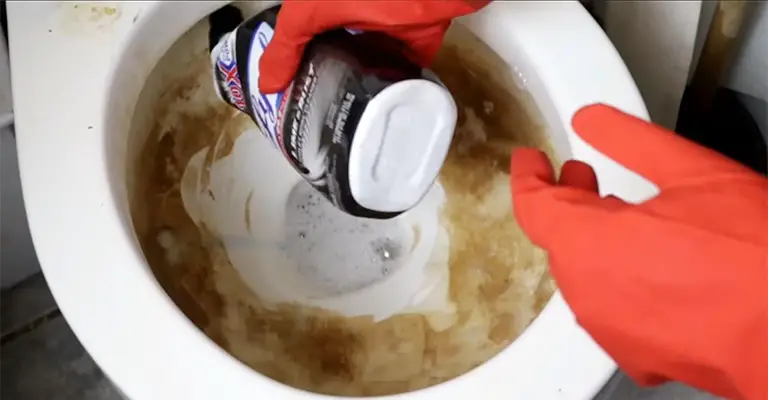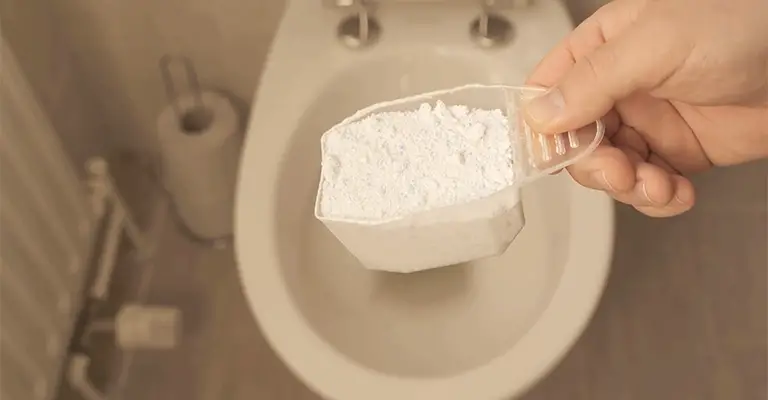Dealing with crystallized urine stains can be a common and unpleasant challenge in households, particularly when it comes to cleaning surfaces like bathroom floors, toilet bowls, mattresses, or fabrics.
The formation of these hardened urine deposits leaves unsightly marks and generates unpleasant odors if left untreated.
Whether you’re a pet owner, a parent potty-training a child, or simply facing an accidental urine spill, understanding how to effectively remove crystallized urine is essential for maintaining a clean and hygienic environment.
How Do Urine Crystals Dissolve?
Uric acid crystals and yellow stains can be dissolvable with a mildly acidic pH of 3-4. Bacteria causing odors are destroyed by hydrogen peroxide at a concentration between 2 and 4%.
The surfactants in surfactants allow them to penetrate deeply into thick soft surfaces, such as mattresses, upholstery, and carpets. Soft surfaces can be safely cleaned with hydrogen peroxide.
Use These Methods To Remove Crystallized Urine From Toilet Bowls

The toilet is one of the most essential fixtures in the bathroom when it comes to creating a welcoming atmosphere.
The formation of urine scale is not just a cosmetic issue: It promotes bacterial growth. These tips will help you eliminate the urine scale – and prevent it from reappearing.
Leaving urine scale in the toilet for too long makes it harder to remove: It forms layers and becomes thicker.
1. Everyday Products To Tackle Urine Scale
Some everyday household products can also effectively remove urine scales, even though you can buy special removers in shops.
Health and the environment are often less adversely affected by the use of these cleaners than by chemical cleaners. Homeowners also rely on them for a number of necessities.
2. Acidic Cleaning Products

It is common to find extensive urine scales in the bathroom of an older house. Cleaning products containing acid is necessary to remove stubborn urine scales.
To ensure proper performance, the product must be left for an extended period of time. You can remove the scale from the surfaces if you soak some kitchen roll or toilet paper in urine scale remover.
Place the paper over the urine scale overnight and allow it to work. Flushing the toilet with water and brushing it is suggested the following day. In case you need to repeat the procedure several times, you can do so.
3. Vinegar Acid
You can leave a half-bottle of vinegar essence in the toilet bowl overnight to help with the odor. If you have any urine scale in the morning, it will be easy to remove it.
Also, you can use this method to clean urine scales from the toilet pipe. Compared to other cleaning agents, vinegar acid is more environmentally friendly, but it should still be used cautiously.
4. Dishwasher Tabs

You can place two dishwasher tabs in the toilet bowl and let them work for a few hours. Once you’ve cleaned the toilet, use a toilet brush to remove any residue, and flush clean water to finish.
Disadvantage: Traditional dishwasher products often contain phosphates that are harmful to the environment.
Several environmentally friendly dishwasher tabs contain salts (sodium), protein compounds, and plant surfactants. Although they take longer to work, they are more efficient.
5. Citric Acid
It is quite gentle compared to vinegar acid to use citrus acid instead. It is gentle on surfaces and very effective against small amounts of urine scale. One disadvantage is that lemon juice may not be able to remove stubborn stains when used alone.
6. Baking Powder

Natron is an ingredient found in everyday baking powder. Apply baking powder to stains by scattering two or three little packs.
Natron should be left for one hour to work. You can remove any remaining residue with a toilet brush if necessary. When treating urine scales, baking powder is an effective and eco-friendly alternative.
7. Hydrochloric Acid
With hydrogen chloride, even the most ingrained urine scale can be removed quickly and easily. Ceramic bowls, however, will be more vulnerable to staining in the future because it is pretty aggressive and can damage the ceramic surface.
Additionally, corrosive acids can harm the eyes, skin, and respiratory systems. Because of its excellent cleaning ability, hydrochloric acid should not be used.
8. Denture Cleaners
You should place two denture cleaning tablets in the toilet bowl overnight for them to work.
A disadvantage to denture cleaners is that they usually contain harsh chemicals and ingredients that can irritate your skin and eyes. Furthermore, they are pretty expensive.
9. Coca-Cola

It also contains phosphates, which fight the formation of urine scales. A tried-and-tested method for removing stains from toilet bowls is combining Coca-Cola with baking powder.
Coke is a food product, not a beverage, which means it shouldn’t be consumed in this way.
10. Pumice Stone
An example of this technique is using a pumice stone. A stone of this type is commonly used to smooth rough surfaces. Because it is made from volcanic ash, it is extremely abrasive.
It works by moistening the pumice stone and rubbing it over the stained area in a circular motion. It is the stone’s abrasive nature that will scrub away urine scale. Once you have finished, rinse out any leftover materials.
Urine Scale And Lime: The Cause Of Staining
The urine scale can be an unpleasant and stubborn problem causing yellow-brown stains in the toilet bowl, on the rim, and the U-bend.
But what is a urine scale?
Chemical reactions create urine scale: lime in toilet water reacts with urine substances to produce scale. It is equally challenging to break urine scale as a mineral stone if it has a high pH value.
It is caused by bacteria that break down the urea in urine, which causes a high pH value. Some toilets develop urine scales more rapidly than others.
There is a high level of lime in the tap water in the area. Water seeping through layers of limestone causes lime deposits to form. Rainwater absorbs lime before reaching the groundwater, which then builds up.
Water containing lime is not a problem as such, but it can cause annoying scale build-up in appliances such as washing machines and coffee makers.
It also depends on the hardness of the water and how severe the limescale is. In different regions of the country, tap water has different levels of lime.
There is a reason for this since soil composition varies. Regular cleaning and descaling will, however, quickly remove superficial limescale formations.
Tips: Flushing a toilet with rainwater will not use tap water because rainwater is used for sanitary purposes.
Rainwater contains no limescale, which prevents the formation of urine scales in toilets. Maintaining a clean bathroom and removing limescale can also prevent urine scale.
Can I Just Use Soap On Crystallized Urine Stains?
For the most part, using soap won’t accomplish much when it comes to removing crystallized urine. If you use an enzyme cleaner, you must leave it on the stain for up to 48 hours, so a regular bar of soap will do little to help.
The easiest way to clean your windows is to use baking powder and lots of soap if you can’t find the cleaner. Repeat this a couple of times, and the stain should disappear.
Is It Okay If I Leave The Vinegar In The Toilet Overnight?
In fact, yes. It is possible to leave the vinegar in the toilet overnight. If your toilets seem relatively clean, leaving vinegar on for 10 minutes might be a good option. If it is a particularly bad ring, leave it on overnight to get rid of it.
Does Vinegar Damage Toilet Bowls?
Vinegar can’t affect your toilet’s tank, bowl, or inside components. This product removes dirt, filth, and mineral stains without causing any harm.
It’s non-toxic. As an added benefit, it also deodorizes toilets, so you will not need to purchase a commercial toilet cleaner.
Final Words
The following steps should help you remove crystallized urine efficiently. The procedure isn’t complicated; you can usually simply use baking soda and enzyme cleaners.
After letting it sit for 48 hours, you can wipe it with regular water. It should prevent the stain from resurfacing, but if it does not, you can repeat the process as often as necessary.
It’s also not necessary to worry about chemicals in the cleaners damaging surfaces. Try to dry out new urine stains as soon as possible since they will be easier to clean that way.







